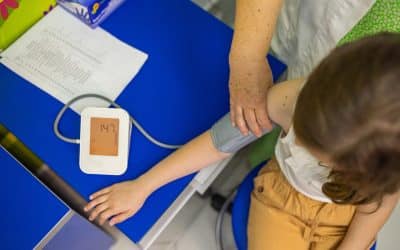Arterial disease, often called Peripheral Vascular Disease (PVD), involves problems with the blood vessels located outside the heart and brain. These vessels, which include both arteries and veins, are crucial for transporting blood throughout the body. One of the most common types...
Peripheral Artery Disease
Are you at Risk for Peripheral Artery Disease?
Millions of people in the U.S. have some form of peripheral artery disease (PAD). PAD occurs when the peripheral arteries to the legs, arms, head, and stomach narrow. Most PAD symptoms occur in the arteries of the legs. Atherosclerosis, which is plaque build-up that blocks and narrows arteries and...
Understanding and Treating Peripheral Vascular Disease
Peripheral Vascular Disease (PVD) is a circulatory condition where narrowed blood vessels reduce blood flow to the limbs, effectively causing symptoms like leg pain when walking (claudication), numbness, and even tissue damage. There are several treatment options available for one in 20 Americans...
Is Peripheral Artery Disease A Death Sentence
Peripheral artery disease (PAD) is a common condition in which the arteries in the legs become narrowed or blocked by a buildup of plaque. This condition affects millions of people worldwide and can lead to serious complications such as amputation, heart attack, and stroke. As a potential patient,...
Leg Amputation Can Be Avoided in PAD Patients
Each year, more than 150,000 amputations are performed in the US to remove toes, legs or feet affected by advanced peripheral artery disease (PAD). Modern treatment options can restore blood flow to affected limbs and reduce the risk of amputation. PAD patients are at risk of losing a leg and...
How Arterial Disease Affects Your Life
Peripheral arterial disease, or PAD, occurs when arteries become blocked by plaque. Plaque is a substance that forms when fatty substances (cholesterol, for example) stick together and build up on the walls of the arteries. When most people think about arteries, they think about the ones in their...
Health Guide: 5 Causes of Peripheral Arterial Disease
Around 6.5 million people aged 40 and over have peripheral arterial disease (PAD) in the US. This common circulatory problem refers to narrowed arteries that reduce blood flow to your limbs, especially your legs. Many people with PAD have no symptoms. For others, one of...
What You Must Know About Claudication
Peripheral arterial disease (PAD) is a circulatory issue that causes narrowed or hardened arteries. If you are one of the 6.5 million people suffering from PAD, you may notice occasional pain or cramping in your lower legs, buttocks or arms. However, it could be that you have constant pain or...
Eating More Fruits and Vegetables Reduces the Chance of Getting PAD
A recent study shows that including more fruits and vegetables in your diet may help keep your leg arteries free of blockages. That’s good news for patients with peripheral artery disease (PAD). People with peripheral artery disease have a narrowing of the leg arteries. This limits blood flow to...









